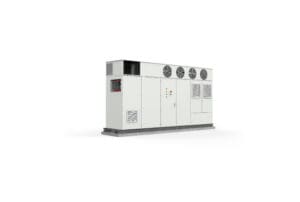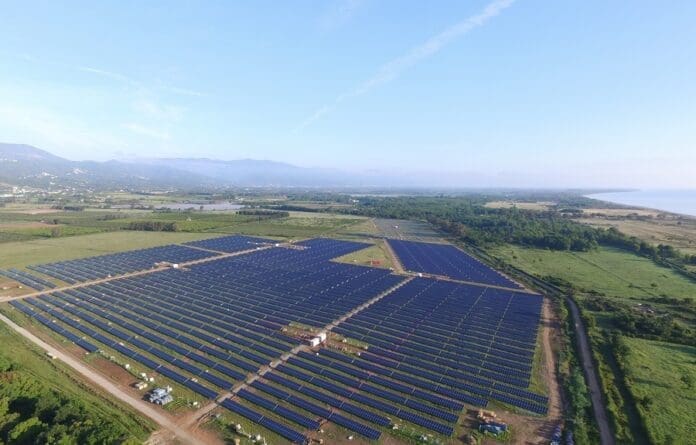Over the past four years, Siemens has invested US$3 billion to expand its US manufacturing footprint and make strategic mergers and acquisitions. The US solar industry stands out as an area that deserves heightened attention. Siemens provides a complete end-to-end solution from the direct current (DC) string box to the medium-voltage substation, powerplant controller, and aftersales and financial services. The company believes that previously static and centralized power plant systems are transitioning into a flexible, intelligent, and increasingly renewable distributed system where solar energy can thrive.
To tap into this market opportunity and take advantage of the benefits of the Inflation Reduction Act (IRA), Siemens will begin manufacturing photovoltaic (PV) string inverters in Kenosha, Wisconsin. The company will produce utility-scale solar components specifically designed to serve the US market. The Kenosha facility, owned and operated by the company’s long-time manufacturing partner Sanmina, will help meet increased demand for localized production of critical parts for PV projects, while helping customers take advantage of the full value of solar tax credits and domestic content incentives.
“According to the Solar Energy Industries Association, the total number of installed US solar fleets is expected to grow fivefold from 2022 to 2033, and with tax credits now available because of the IRA, that demand will only get stronger,” said Brian Dula, vice president of the electrification and automation business at Siemens Smart Infrastructure USA. “Working with Sanmina to establish this new production line, Siemens is well positioned to address supply challenges our country is facing as we work to localize production for green and renewable infrastructure.”
Supporting A Distributed Solar System
Work at the facility will create up to a dozen jobs during its initial ramp-up period, with plans to grow this number at the facility and through the regional supply chain in the future. “Renovations to the building itself are negligible. The production line requires some air drops [for torque wrenches, etc.] and three-phase power to the test stands, where every unit undergoes a full functional and burn-in test before being boxed for shipment,” said Rudy Wodrich, director of solar business at Siemens Smart Infrastructure USA.
The facility will begin production in early 2024 and scale up to a capacity of 5200 BPTL3 string inverters (800 MW) per year. The string inverters, which will range from 125 to 155 kW, will be manufactured with a California Energy Commission efficiency of 99%. The inverters are designed for 1000- or 1500-Volt DC solar array input and can be used for either decentralized or virtual central inverter (VCI) design architectures.

“String inverters can be purchased as standalone units or as part of VCI stations up to 5 MW with direct step-up to medium voltage,” said Wodrich. “The string inverters with 1000- or 1500-Volt input voltage are flexible for decentralized design or the VCI concept. They are adapted to extreme climatic conditions and represent a cost-effective solution for reactive power as well as grid and system protection.”
“In the United States, Siemens currently only focuses on community solar and utility solar ground-mounted projects,” said Wodrich. “Our utility string inverter products rated 125 to 155 kilowatt alternating current [kWac] that will be assembled in Kenosha are best suited for community solar and small utility-scale projects, perhaps up to 30 megawatt alternating current [MWac] but are also suitable for carport canopy-type projects. We also market large central inverter stations with power ratings of up to 4.7 MWac each and have had a great deal of success securing more than 3 GW of projects this year alone. The larger power block helps reduce the number of inverters, along with capital and operating costs. Siemens also has energy storage inverter solutions for both behind-the-meter storage and large-scale energy storage projects.”

Accelerating The Energy Transition
Siemens has invested in the United States for more than 160 years. The company believes it is uniquely positioned to play an important role in ushering in a new era of infrastructure and industrial revitalization. Siemens is bolstering its manufacturing to meet demand and improve supply chains, better serving burgeoning markets including semiconductor and battery manufacturing, electric vehicles (EVs), data centers, and rail systems. The company has made several commitments, such as building 1 million EV chargers for the US market.
In April, Siemens opened the doors to its newest EV charging manufacturing hub located in Carrollton, Texas, where the company will manufacture EV chargers specifically designed to serve the US market. The facility is the company’s second US EV charging manufacturing hub. By taking a holistic approach to the energy transition through many different industries, Siemens can achieve its ESG goals in a variety of ways instead of barreling through a narrow window of opportunity.
“ESG is deeply embedded in our business activities, investment decision-making, and governance across all business units,” said Stacy Mahler, head of sustainability for Siemens Smart Infrastructure USA. “Our Decarbonization, Ethics, Governance Resource Efficiency, Equity, Employability [DEGREE] framework is a 360-degree view of Siemens’ ESG priorities and includes targets to achieve net-zero in our own operations by 2030. Solar generation is an important part of that, through both on-site solar installations at several of our manufacturing facilities, as well as clean energy sourcing options.”
The purpose of the IRA is to spark a surge in US manufacturing and onshore steps in the supply chain to reduce dependence on imports and create jobs. It’s working. Several US companies are boosting production of, and investing in, new technologies. However, one of the unsung benefits is foreign companies investing in the US renewable industry. In May, Enel North America, through its affiliate 3Sun USA LLC, announced the construction of an industrial-scale manufacturing facility for American-made PV cells and modules. The more than 2 million-sq.ft. (185,806-m2) factory in Oklahoma represents a planned investment of US$1 billion, creating more than 1800 construction jobs. Similarly, Danish wind giant, Ørsted A/S, is investing heavily in offshore wind along the US gulf coast. These are just some of the many examples of sizeable capital commitments by non-US-based companies.
“The IRA has created a race to the top,” said Mahler. “Our view is that government investment programs that advance climate goals create opportunities for us to innovate with customers, especially in the areas of digitalization and decarbonization. We get to the tipping point faster when the federal government invests in a sustainable future. We are now seeing new investment in clean energy, semiconductor, battery, and EV manufacturing, as well as new efforts to electrify infrastructure. Siemens is well-prepared to move faster to respond to customer investment and market opportunities.”
Navigating Challenges
Despite the long-term benefits of the IRA, the solar and wind industries have come under pressure due to a cyclical downturn and rising interest rates after a period of rapid growth. But the International Energy Agency still projects solar will overtake coal and natural gas to become the largest energy source for power generation by 2027.

“There are still challenges for developers and independent power producers [IPPs] with general availability of solar modules and there is still some level of uncertainty around import duties that could be levied on some module manufacturers,” said Wodrich. “In addition, the inflation on critical path commodities [steel, copper, aluminum, and plastics] has created upward price pressure on the supply chain for inverters and transformers that has resulted in price increases as well as extended lead times from most of our competitors. Limited supply and longer lead times on critical power electronic components needed to build both inverters and EV charging equipment, as well as a lack of expansion of North American capacity for medium-power transformers [1-MW to 5-MWac ratings] is increasing costs and lead times further. Siemens has been able to leverage our supply chain management to minimize the potential negative impacts to our customers.”
“The other big challenge for our customers is around the interconnection and permitting process on projects,” Wodrich continued. “Interconnection queues continue to grow and there does not appear to be any market-based incentive for the utilities processing interconnection requests to add resources and reverse the trend of longer and longer interconnection application processing. It may be necessary for legislative or regulatory action to address this barrier to encourage faster solar and energy storage rollout at the national level.”
The IRA has created a level of stability in the solar and energy storage market in the United States that has not been seen before. The task is for companies like Siemens to balance the industry’s long-term potential despite short-term challenges.
“Due to the IRA, we believe the US solar and energy storage industry is poised for a period of stability for the next seven to 10 years,” said Wodrich. “Incentives for customers to source from US suppliers and for those suppliers, in turn, to maximize the US material content of what they manufacture, will create a large trickle-down effect for the communities where solar manufacturing takes root. Tax credits will remain stable and/or if set to sunset, the sunset path is well understood by the market players.”
















